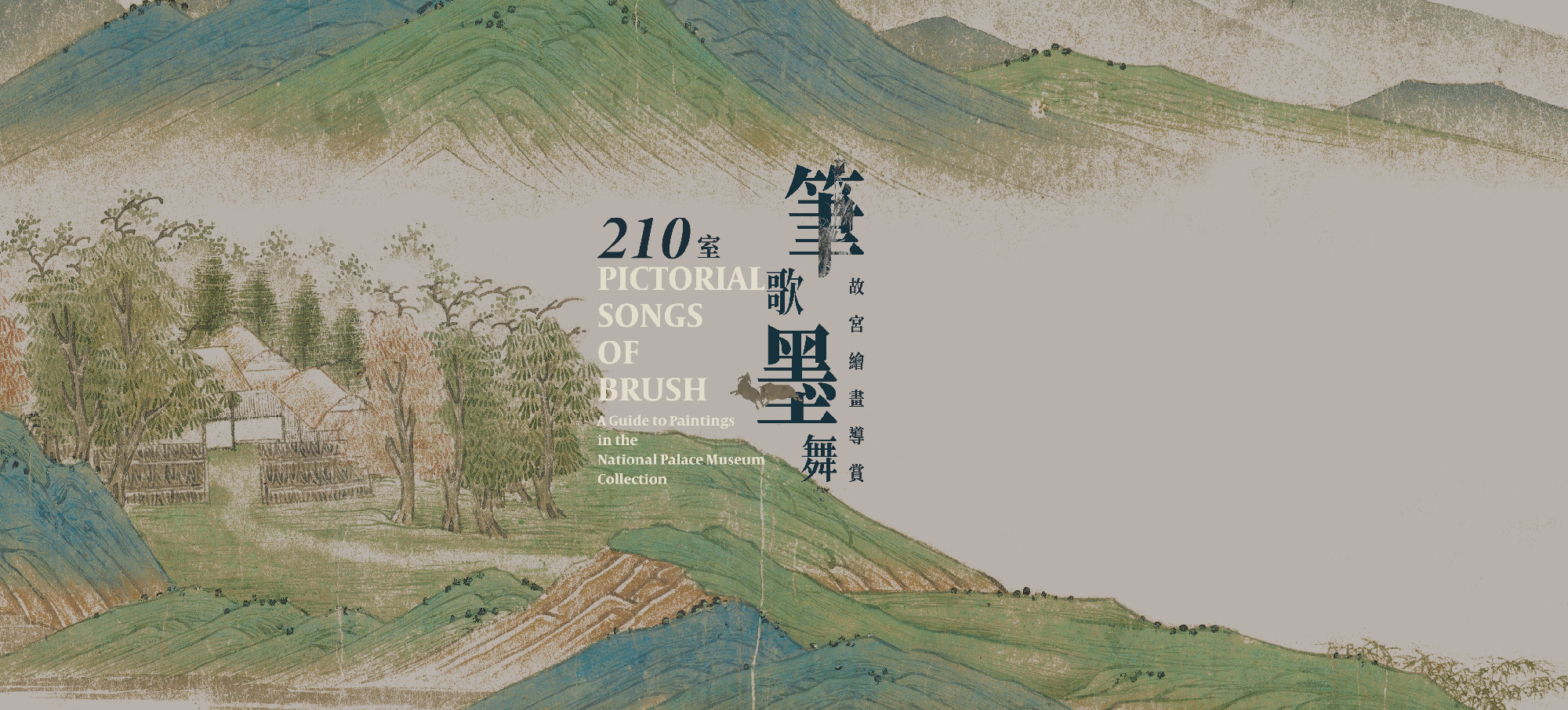Selections
-
Figures and Landscape
Attributed to Ma Yuan, Song Dynasty
SilkMa Yuan (ca. active 1190-1224) was a court painter in the Southern Song dynasty. This painting depicts two people under the shade of a pine tree; they face the cliffs across the river, with one bending forward and the other bending in the opposite direction; they seem to be performing the breathing methods of Taoism. The horizontal 'axe-cut' shadings by a brush's side created the textures of the mountain and stone, the pine branches twisting in an upright movement, with light fog covering the scene partially; the painting reflects the style of Southern Song Court painting. However, the textures on the mountain and stone are more regular, and the arrangement of the layout does not bring out the dimension, which is similar to the collection of Seikado Bunko in Japan, the 'Painting of Pavilion and Landscape' by Sun Junze (active in the 14th century) from the Yuan dynasty. Sun Junze was a native of Hangzhou Province. Sun's style was influenced by the Southern Song Court painting and studied techniques of Ma Yuan and Xia Gui (active around 1180-1230); Sun pioneered the Zhe School landscape painting in the Ming dynasty.
-
The Donglin Garden
Qiu Ying, Ming Dynasty, Silk
Qiu Ying (ca. 1494-1552), style name Shifu, sobriquet Shizhou, was a native of Taicang, Jiangsu Province. Qiu relocated to Suzhou at a young age, and studied painting under Zhou Chen by the introduction of Wen Zhengming (1470-1559); he once produced paintings for the connoisseurs Xiang Yuanbian (1525-1590) and Chen Guan from Changzhou. Qiu was skilled at painting landscapes and figures and was praised as one of the four masters in the Ming dynasty.
This composition of this piece demonstrates the changes between intense and loose arrangements. The painting depicts the woodland in front of a studio, with hill stones and thin grass at the bottom, presenting the richness of flowers and plants in the natural scenery. Inside the studio, two people sit across from each other, with one servant carrying scrolls standing beside them, and the other boiling spring water. The tree leaves are painted in fine dots; each forceful brushstroke paints the bamboo leaves in double-hook shapes. The use of a dry brush with dense ink gives shading textures to the hill stone, and the smudging of wet light ink enhances the excellence of this image. -
Waiting for the Ferry by a Misty River
Qian Xuan, Song Dynasty
Qian Xuan (1239-1301), style name Shunju and Zhahuoweng, was a native of Zhachuan (now Huzhou, Zhejiang Province). He received the ]inshi degree as a Xianggong provincial candidate during the Jingding reign (1260-1265) of the Southern Song dynasty. Instead of serving in an official position, Qian devoted his life to calligraphy and painting. This scroll painted the landscapes in the autumn; the use of a straightened brush created the shading textures on the mountain hill, demonstrating the elegance of blue and green landscapes, which was also enriched with the tranquil charm of literati paintings. The bushes applied with dotted shading in thin brush showed an abundant lushness; the balance of peaceful composition portrayed the transcendence of the place. The painter created these serene landscapes filled with poetic expressions, and with the poem written on the painting, in the hope of subtly manifesting his desire to live in seclusion away from the world.
-
Bamboo
Xia Chang, Ming Dynasty,Paper
Xia Chang (1388-1470), style name Zhongzhao, sobriquet Zizai Jushi and Yufeng, was a native of Kunshan, Jiangsu Province. His family name changed from Zhu to Xia. Xia was the advanced scholar in the Yongle reign and was promoted as Vice Minister at Taichang Temple in the mid-Zhengtong reign of Emperor Yingzong. Xia was an expert in regular script and excelled at bamboo painting. Xia's painting expresses his study under the mentorship of Wang Fu (1362-1416) but with a few variations. Xia's reputation travelled far beyond the frontier; thus, there was a compliment that say, 'One painted bamboo by Xia, worth ten ingots of gold in Xiliang'.
This painting depicts the water bank and hillside stones, and the overlapping bamboo leaves painted in the shape of '个' and '介' decorate the image. The use of dark and light ink differentiates the depth of the painting, the stems of the bamboo show the intensity of the brushstrokes, and features such as the thin stems and large leaves share similarities to Wang Fu's style.
-
Elegant Comfort Amid Forests and Springs with Seven-character Poetry
Wen Zhengming, Ming Dynasty Silk (Painting), Paper (Calligraphy)
Elegant Comfort Amid Forests and Springs with Seven-character Poetry Wen Zhengming, Ming Dynasty Silk (Painting), Paper (Calligraphy) Wen Zhengming (1470-1559), style name Zhengzhong, was a talented poet, painter, and calligrapher, in addition to being an erudite art appraiser. Wen was regarded as the leading figure of the 'Wu school' in art. Wen was one of the four masters in the Ming dynasty. This piece rendered in ink and colors on silk was done when he was 85 years old, and the use of blunt brushes brought out the unrefined quality of the painting. The painting of a peaceful water land, portrayed the literati leisurely strolling in the woods by the river, beside the short fences and houses, and along the path next to the pavilion. Appearing among the trees and banks is a thatched building with a low fence along with a waterside kiosk and a small path. The frontispiece features the title of the painting written in large characters, and after the painting is a long inscription of six seven-character poems in running script. The large-script calligraphy is thick and hoary with upright vigor. The inscribed poetry, on the other hand, is in small and sprightly semi-cursive script on paper, which reveals traces of the brush between the characters with an easy and classic sense of pure and flowing vigor. Each character has the centre slightly leaning to the left, which was the long-standing practice of Wen.


